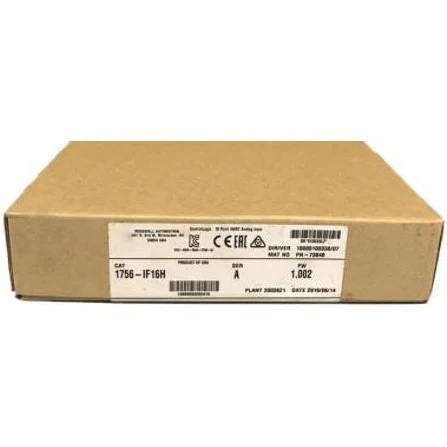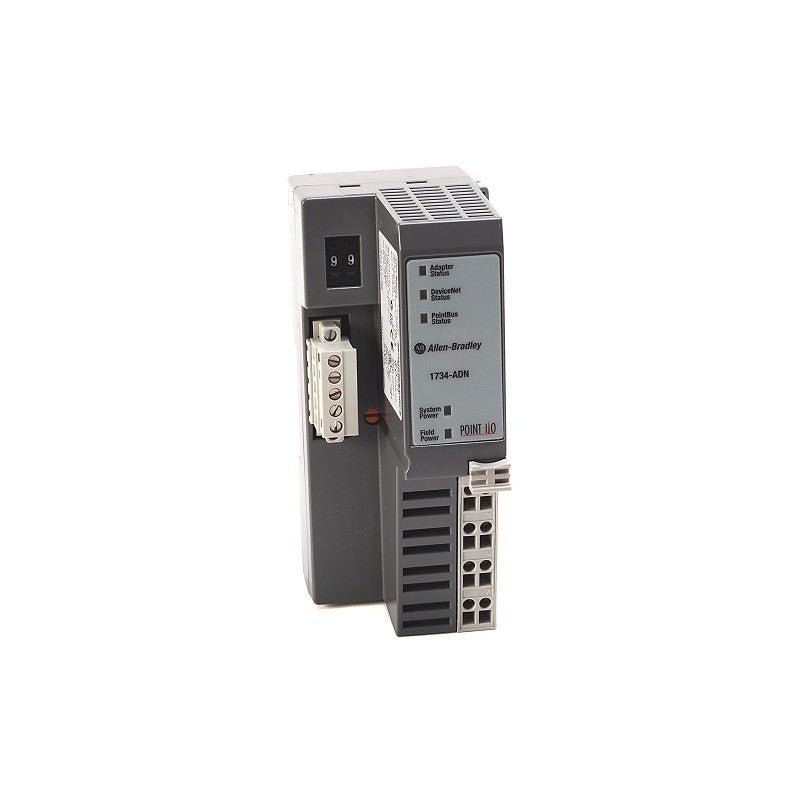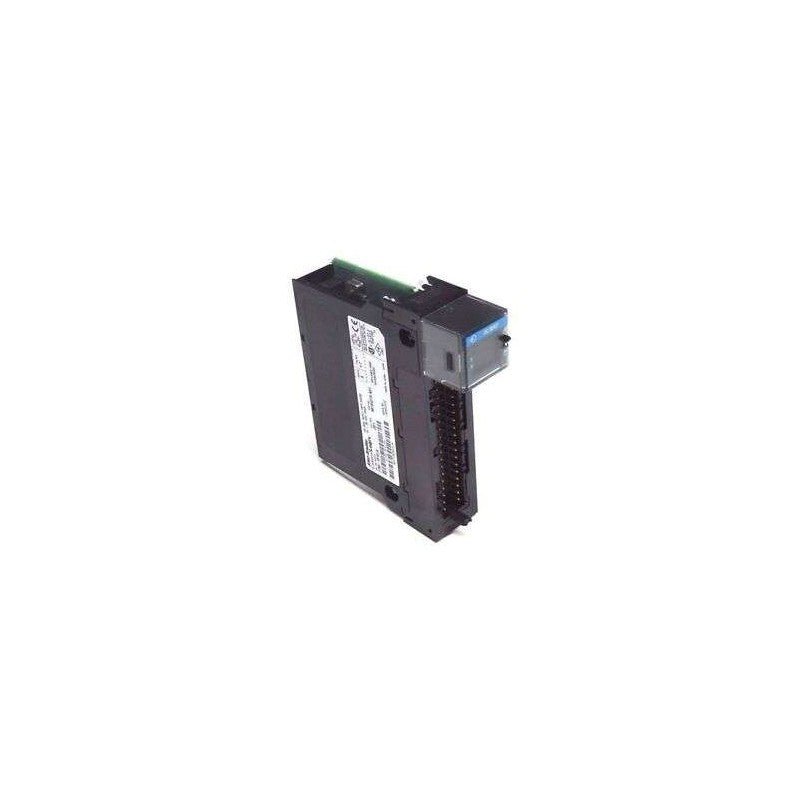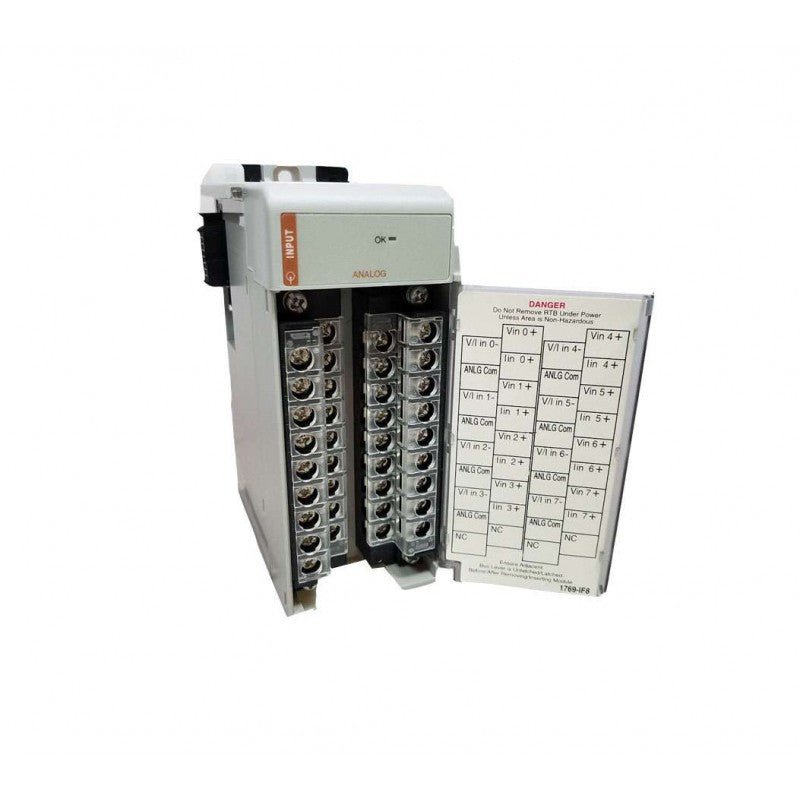1756-IF16 Allen Bradley Controllogix Input Module
The 1756-IF16 Allen Bradley Controllogix Input Module is a powerful and versatile tool for industrial automation and control. It is a multi-function input module that features 16 discrete inputs, each of which can be individually configured to accept signals from digital or analog sources. With its flexible design, this module can be used in a variety of applications in the industrial sector, such as motor control, machine monitoring, and process control. In this article, we will discuss the features and benefits of using the 1756-IF16 Controllogix Input Module, as well as how it can benefit your business.
What is the 1756-IF16 Allen Bradley Controllogix Input Module?
The Allen Bradley 1756-IF16 is a control module that is used to interface with various input devices. It is part of the Allen Bradley Controllogix family of products and is compatible with the 1756 chassis. The module has 16 input channels and each channel can be individually configured. The module also has an LED status indicator for each channel.
How does the 1756-IF16 Allen Bradley Controllogix Input Module work?
The 1756-IF16 Allen Bradley Controllogix Input Module is a digital input module that provides sixteen points of isolated input. The module has two banks of eight inputs, each of which can be configured for either voltage or current. The module supports both AC and DC inputs, and can be used with a variety of input devices, including push buttons, limit switches, and thermostats.
What are the benefits of using the 1756-IF16 Allen Bradley Controllogix Input Module?
The 1756-IF16 Allen Bradley Controllogix Input Module provides a variety of benefits for users, including:
• Increased flexibility and functionality – The module offers 16 input channels that can be used to collect data from a variety of sources, providing greater flexibility and functionality than other input modules on the market.
• Enhanced accuracy and precision – The module’s 16-bit resolution enables it to provide more accurate and precise data than other input modules.
• Greater speed and efficiency – The module’s high-speed sampling rate of 10kHz allows it to quickly and efficiently collect data, which can be processed in real-time.
Overall, the 1756-IF16 Allen Bradley Controllogix Input Module provides users with increased flexibility, enhanced accuracy and precision, and greater speed and efficiency.
How to install and use the 1756-IF16 Allen Bradley Controllogix Input Module?
The 1756-IF16 Allen Bradley Controllogix Input Module is a high density input module that can be used in a variety of applications. It offers 16 isolated inputs, each of which can be configured for a different function. The module also has an LED indicator for each input, so you can easily see the status of each input.
To install the 1756-IF16 Allen Bradley Controllogix Input Module, first power down your system and remove all modules. Next, insert the module into slot 0 of your chassis. Make sure that the notches on the module align with the notches in the slot. Once the module is inserted, reconfigure your system power up sequence and apply power to the system.
Now that the module is installed, you will need to configure it for your specific application. The first thing you will need to do is decide which of the 16 inputs you want to use and what type of signal they will be carrying. There are four different types of signals that can be carried by the 1756-IF16: digital (on/off), analog (voltage), frequency (Hz), or temperature (°C). Once you have decided which inputs you want to use and what type of signal they will be carrying, you will need to set up your software to reflect these changes.
If you are using Rockwell Automation software, such as RSLogix 5000 or Studio 5000 Logix Designer, you will need
Troubleshooting the 1756-IF16 Allen Bradley Cont
If you’re having trouble with your 1756-IF16 Allen Bradley Controllogix input module, there are a few things you can do to troubleshoot the issue.
First, check all of the connections to make sure they are secure. Next, check the status of the power supply and make sure it is turned on and functioning properly. Finally, check for any loose or damaged wires.
If you’ve checked all of these things and the problem persists, it’s likely that the module itself is faulty. In this case, you’ll need to replace it with a new one.













 Arabic
Arabic Dutch
Dutch English
English French
French German
German Italian
Italian Japanese
Japanese Korean
Korean Malay
Malay Portuguese
Portuguese Russian
Russian Spanish
Spanish Thai
Thai Turkish
Turkish Ukrainian
Ukrainian Vietnamese
Vietnamese
Reviews
There are no reviews yet.